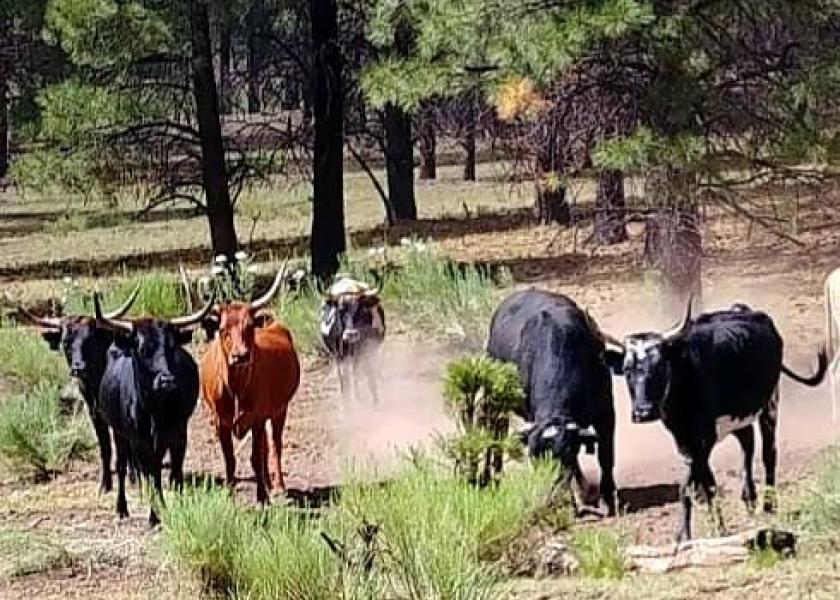Feds Plan Aerial Gunning of Estray Cattle in New Mexico

An unknown number of estray cattle roam the Gila National Forest near the New Mexico/Arizona border. Grazing on sensitive forage, the Federal Wildlife Service (FWS) plans to shoot the estray cattle via helicopter flyover beginning February 8-10, 2022.
Previous efforts have been made to round up estray cattle in the forest, catching approximately 20 head; however, this has pushed the remaining cattle further into the forest.
The New Mexico Cattle Growers Association stated in a press release that they are concerned with the FWS agents’ ability to determine branded and unbranded livestock. “From a helicopter this task would be difficult for even a knowledgably adept livestock producer to identify brand markings and ear tags. There is no assurance that the gunning-down of these livestock will not include private property.” NWCGA says.
With minimal notice of the planned action, NMCGA points out that there is no federal statute or regulation that allows the FWS to gun-down livestock. The impoundment of livestock is allowed, but only after certain notice conditions are met. Estray livestock are under the jurisdiction of the New Mexico Livestock Board.
Another point of contention with local cattle ranchers is the presence of the federally listed endangered species, the Mexican Gray Wolf. Shooting the estray cattle will provide an easily accessible food source that may condition the wolves to prey on livestock.
A similar proposal of managing the estray cattle last year ended with a notice of intent to sue by local ranchers. In addition, the New Mexico Livestock Board renounced the use of aerial gunning.







